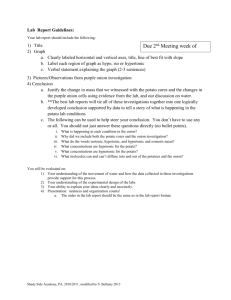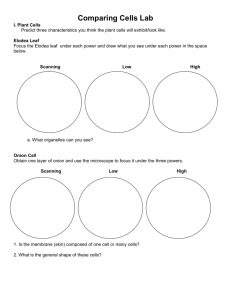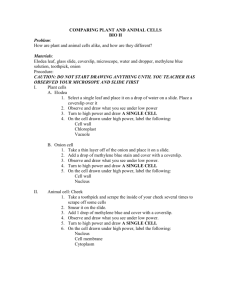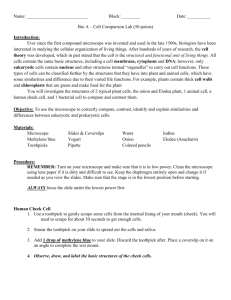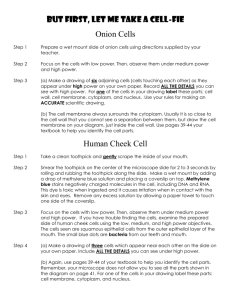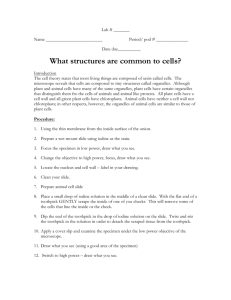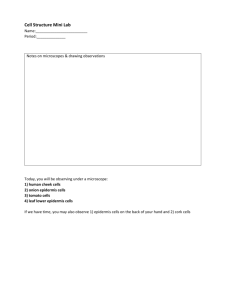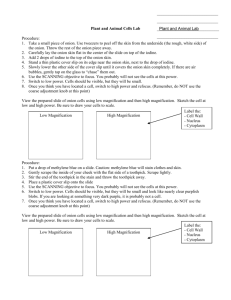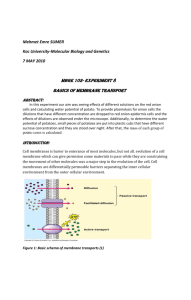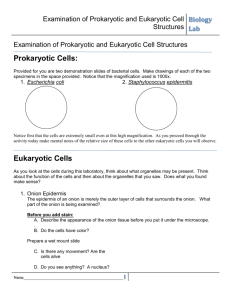Lab # ______: Investigating Different Cell Types (Honors)
advertisement
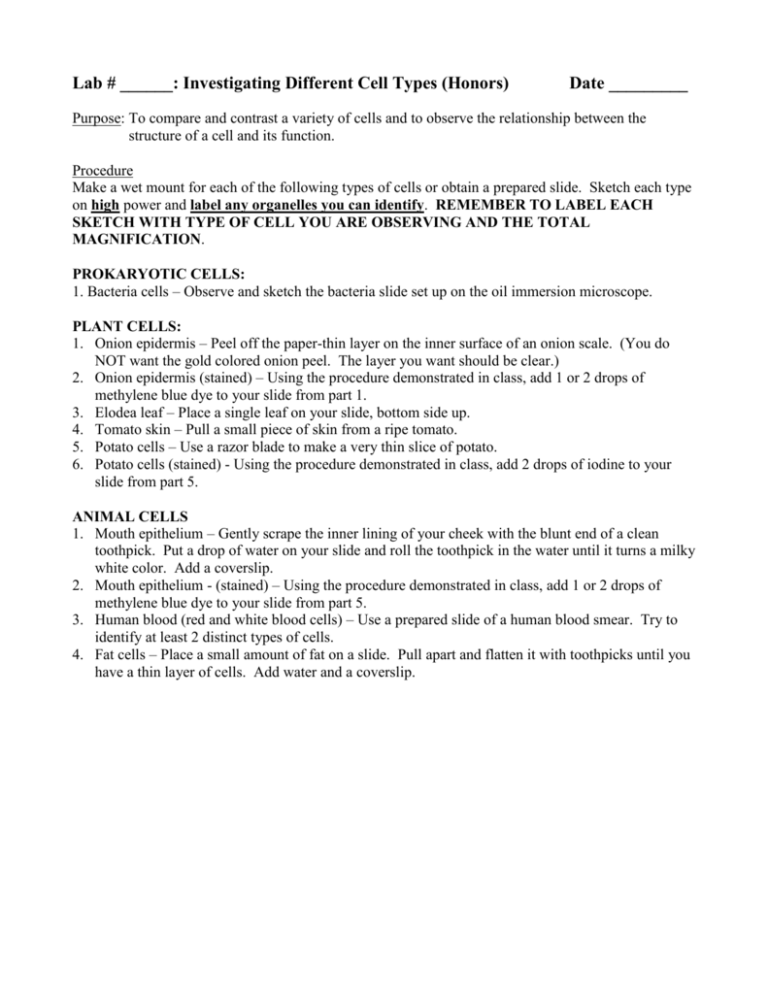
Lab # ______: Investigating Different Cell Types (Honors) Date _________ Purpose: To compare and contrast a variety of cells and to observe the relationship between the structure of a cell and its function. Procedure Make a wet mount for each of the following types of cells or obtain a prepared slide. Sketch each type on high power and label any organelles you can identify. REMEMBER TO LABEL EACH SKETCH WITH TYPE OF CELL YOU ARE OBSERVING AND THE TOTAL MAGNIFICATION. PROKARYOTIC CELLS: 1. Bacteria cells – Observe and sketch the bacteria slide set up on the oil immersion microscope. PLANT CELLS: 1. Onion epidermis – Peel off the paper-thin layer on the inner surface of an onion scale. (You do NOT want the gold colored onion peel. The layer you want should be clear.) 2. Onion epidermis (stained) – Using the procedure demonstrated in class, add 1 or 2 drops of methylene blue dye to your slide from part 1. 3. Elodea leaf – Place a single leaf on your slide, bottom side up. 4. Tomato skin – Pull a small piece of skin from a ripe tomato. 5. Potato cells – Use a razor blade to make a very thin slice of potato. 6. Potato cells (stained) - Using the procedure demonstrated in class, add 2 drops of iodine to your slide from part 5. ANIMAL CELLS 1. Mouth epithelium – Gently scrape the inner lining of your cheek with the blunt end of a clean toothpick. Put a drop of water on your slide and roll the toothpick in the water until it turns a milky white color. Add a coverslip. 2. Mouth epithelium - (stained) – Using the procedure demonstrated in class, add 1 or 2 drops of methylene blue dye to your slide from part 5. 3. Human blood (red and white blood cells) – Use a prepared slide of a human blood smear. Try to identify at least 2 distinct types of cells. 4. Fat cells – Place a small amount of fat on a slide. Pull apart and flatten it with toothpicks until you have a thin layer of cells. Add water and a coverslip. Type of cell _________________________ Total Magnification ___________________ Observations and comments: Type of cell _________________________ Total Magnification ___________________ Observations and comments: Type of cell _________________________ Total Magnification ___________________ Observations and comments: Questions 1. How do the prokaryotic cells you observed differ from the eukaryotic cells? 2. What cellular structures of eukaryotic cells were you able to view with your microscope? 3. What cellular organelles have you studied that are too small to be seen with your microscopes? 4. What cellular structures did you observe only in plant cells? 5. Were all of these found in all the plant cells you observed? Explain. 6. How did the methylene blue change the appearance of the cells? 7. What important organelle is missing from the human red blood cells? 8. How might the lack of this organelle relate to the function of red blood cells? 9. How did the addition of iodine alter the appearance of the potato cells? 10. What clue does this give you to the function of the potato cells? 11. In general, how does the shape of plant cells compare to the shape of animal cells? 12. Both onion epidermis and cheek epithelium are cells that line and protect other tissues. What structural features do these cells share that might relate to this function? 13. Both potato cells and fat cells serve as storage cells for macromolecules. . What structural features do these cells share that might relate to this function? Conclusion 1. Based on your observations, compare and contrast plant and animal cells. Include such features as cell shape and organelles seen in your comparison. 2. Use examples from your observations to illustrate how a cell’s structure may be related to its function.
